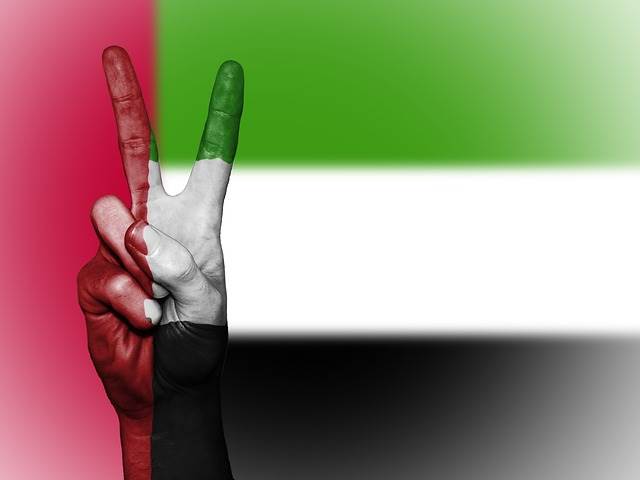The United Arab Emirates is one of the top oil producers in the world. Although production of crude oil is the country’s most important economic activity, the UAE is working towards a more diversified economy by expansion into the non-fuel sector. This will help establish the United Arab Emirates as financial and international trade hub.
Top Forex Brokers
Although economic growth slowed 1.6% in 2015 from 2014, the growth rate was still respectable. Increased fiscal spending and smart investing helped soften the blow from the oil price crash. The UAE is still very dependent on oil; therefore, analysts give the country modest growth expectations.
The United Arab Emirates is a federation of seven emirates: Abu Dhabi, Ajman, Dubai, Sharjah, Fujairah, Umn al-Quwain and Ras al-Khaimah. While the federation is in charge of many areas including but not limited to foreign affairs, defense, currency, and immigration, the local governments have control over other issues. Markets, except for regulated industries such as water, electricity, and telecommunications, are open. The government prides itself on innovation, sustainability, and diversification and knows that dependence on one sector can lead to downfall.
The 2015 Oil Crash
The oil price crash in 2015 led the UAE government to limit oil’s contribution to the GDP to 20%. As such, Dubai limited its oil reserves and began to promote its tourism and services export sectors. These promotions have been so successful that now less than 5% of Dubai’s revenue comes from oil and a majority comes from hotel and restaurant fees, foreign bank fees, and royalties on oil. Government debt declined in 2014 due to surpluses from the two previous years. Fitch and Standard & Poor’s gave UAE a AA rating with a stable outlook and Moody’s gave an AA2 rating with a negative outlook.
The UAE is currently the seventh largest oil producer in the world and has an extensive oil reserve. If the UAE continues production at the current pace, it would be able to produce oil for more than 90 years. The marginal production cost of one barrel is $7 USD. This has led to a strong dependence on oil. In 2014, 19% of the GDP was oil, 39% of exports were oil, and 35% of tax revenues were from oil. The UAE is extremely vulnerable and needs serious buffers in case of a shock to the oil market.
The currency of the UAE is called the Dirham and it is pegged to the USD at 0.2722. 1 USD is equal to 3.6725 Dh. In 2015 the government had a 78.4 billion USD foreign reserve which reduced the vulnerability of the peg due to falling demand for oil.
UAE’s Trade Zones
The United Arab Emirates has 37 free trade zones divided into business categories. The zones have favorable tax and business regulations such as no personal income tax, tax exemptions on imports and exports, and corporation tax exemptions of up to 50 years.
The UAE connects three continents- Europe, Africa, and Asia. There is heavy investment in infrastructure. The UAE is home to market leading companies like Emirates Airlines and DP World. The airports in Dubai and Abu Dhabi as well as the Jebel Ali harbor have made the country a global center for finance and travel.
The country is a very attractive market for foreign investment. With a per capita GDP of $43,000 USD, the population is considered wealthy. UAE was ranked 17th in 2015-2016 by the World Economic Forum Global Competitiveness Report. Foreign investors are also attracted to the favorable regulations and taxes. In the World Bank Ease of Doing Business report in 2016, the UAE scored well on construction permits, paying taxes and electricity. But the UAE still needs to work on other important issues such as getting credit and resolving insolvency. There is no minimum wage and there are loose hiring and firing practices. The population is young and well educated. The UAE is advanced relative to other countries in the Middle East because it is very open and very competitive but there are big hurdles to overcome with regards to financing and starting a business.
UAE’s Economic Growth
Economic growth in the UAE in non-oil sectors such as construction, hospitality, and transport services has remained strong. Agriculture production has declined steadily while goods production has grown steadily. The construction sector is expected to grow while the ICT industry is expected to decline.
The UAE joined the WTO in 1996 and signed various trade and economic agreements with countries in Asia, Africa, Europe, South America, and Australia. The UAE is also part of the Gulf Cooperation Council. The UAE signed the Greater Arab Free Trade Area Agreement which allows to have free trade with Syria, Lebanon, Iraq, Morocco, and Jordan. The GCC is currently negotiating free trade zones with the EU, Japan, China, India, Pakistan, Turkey, Australia, New Zealand, Korea and the Group of Mercosur and already has free trade agreements with Singapore, EFTA, Switzerland, Norway, Iceland, New Zealand, and the Principality of Liechtenstein.
UAE’s Imports & Exports
UAE’s imports increased 7.9% in 2015 totaling $264.3 billion USD. The country’s top three import partners are China, India and the United States. Imports from China are expected to grow the fastest while imports from the US are expected to decline. Construction-related materials is the country’s largest import product group.
Exports are expected to grow to US $196 billion. The largest export markets were Japan, India, and South Korea in 2015 but it is expected that China will overtake Japan by 2019. The biggest export product is oil but pharmaceuticals and vehicles and transport equipment are forecast to have the fastest annual growth rates.
While the UAE maintains a surplus in trade in goods, there is a deficit in trade. However, both import and export of services are growing.
With the UAE’s dedication to diversification and strong competitiveness, along with its favorable business environment, the economy of the United Arab Emirates should continue to be resilient.

